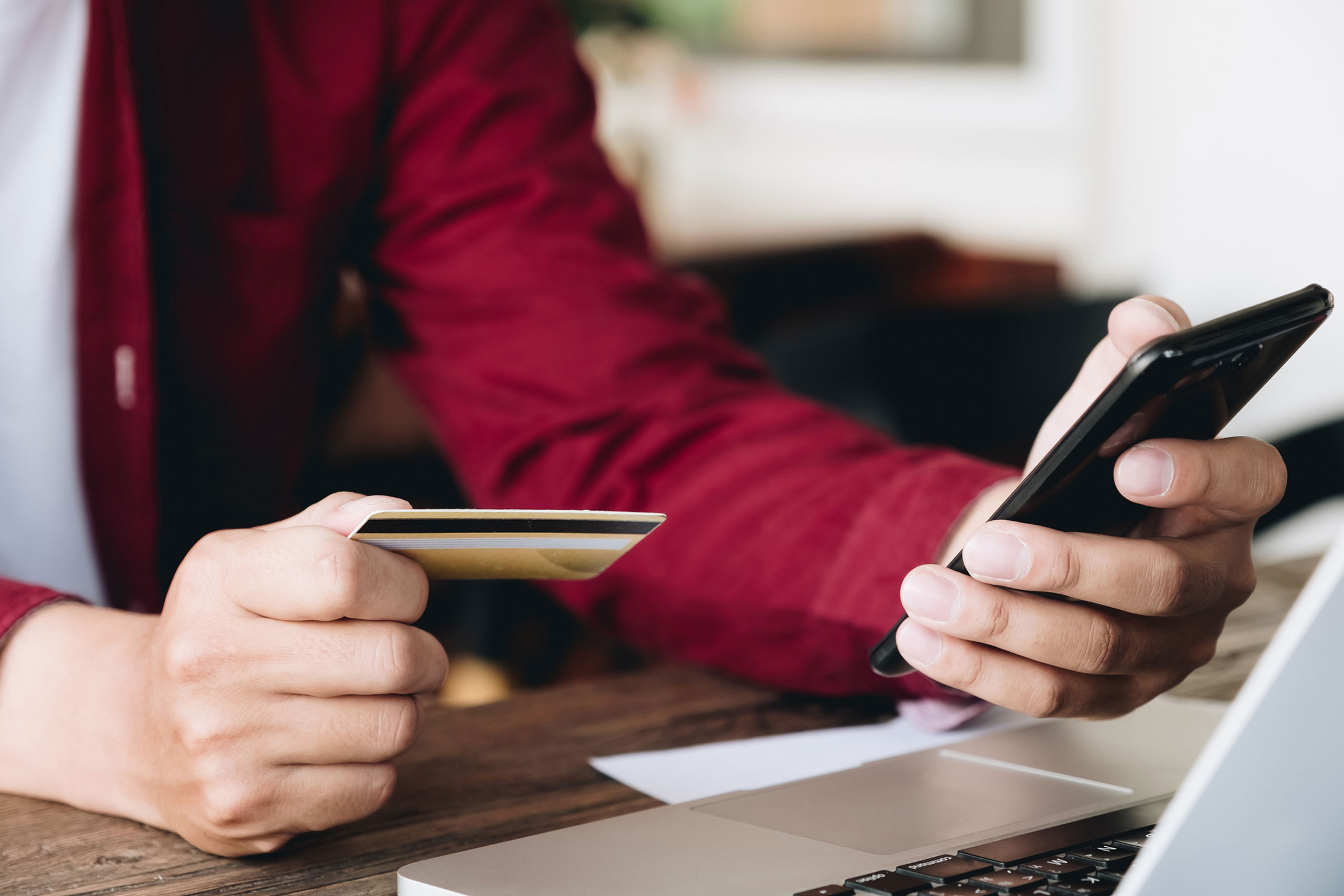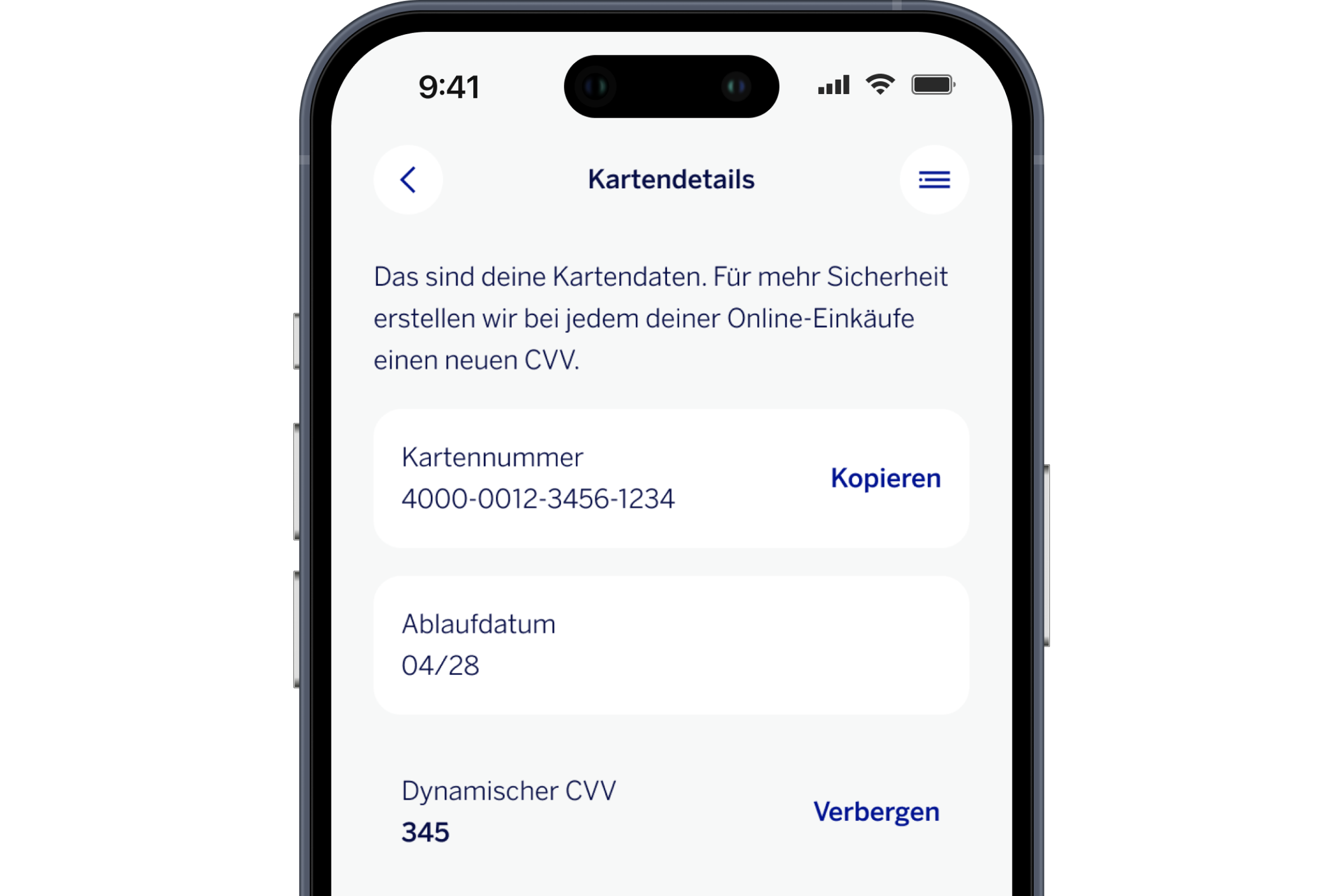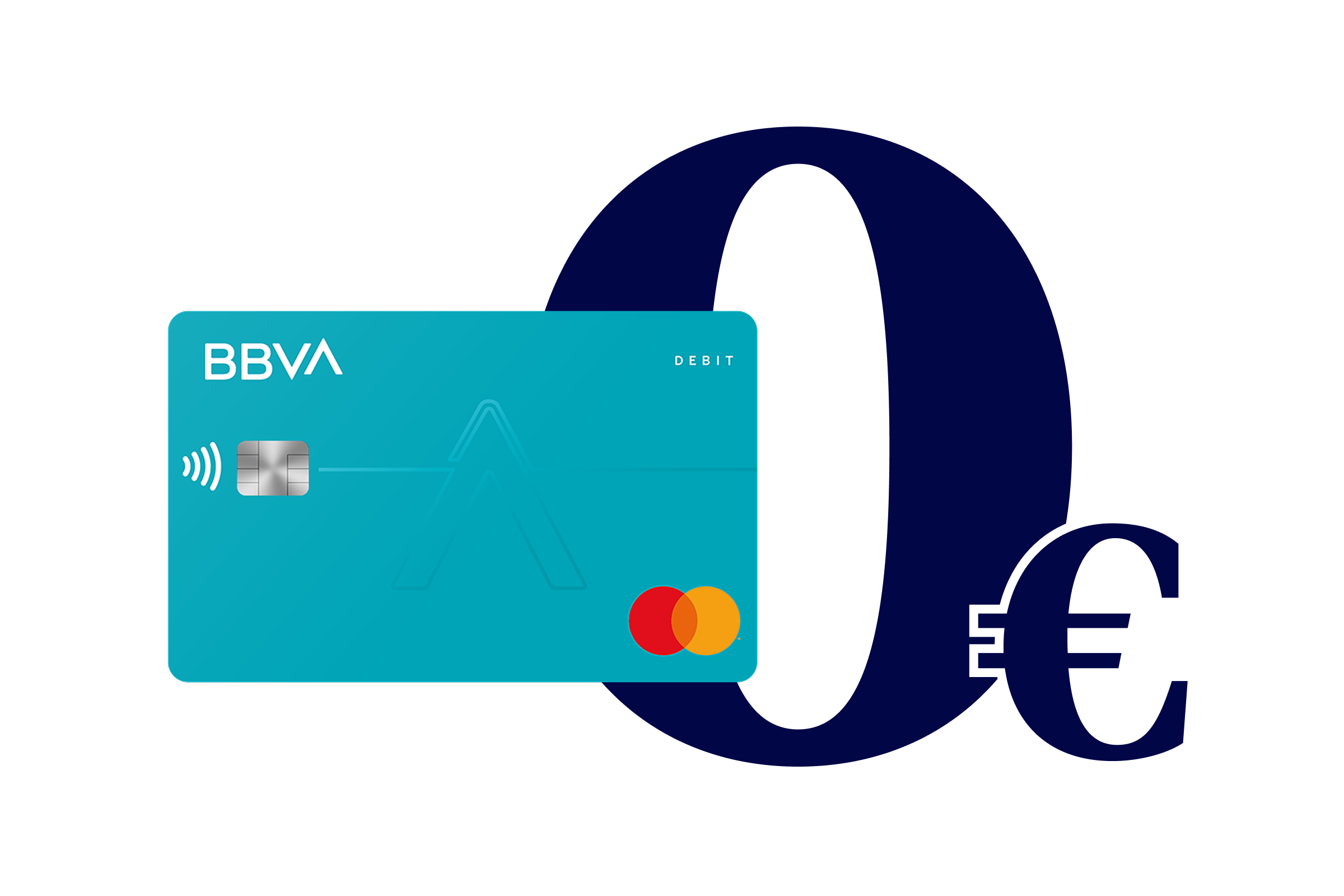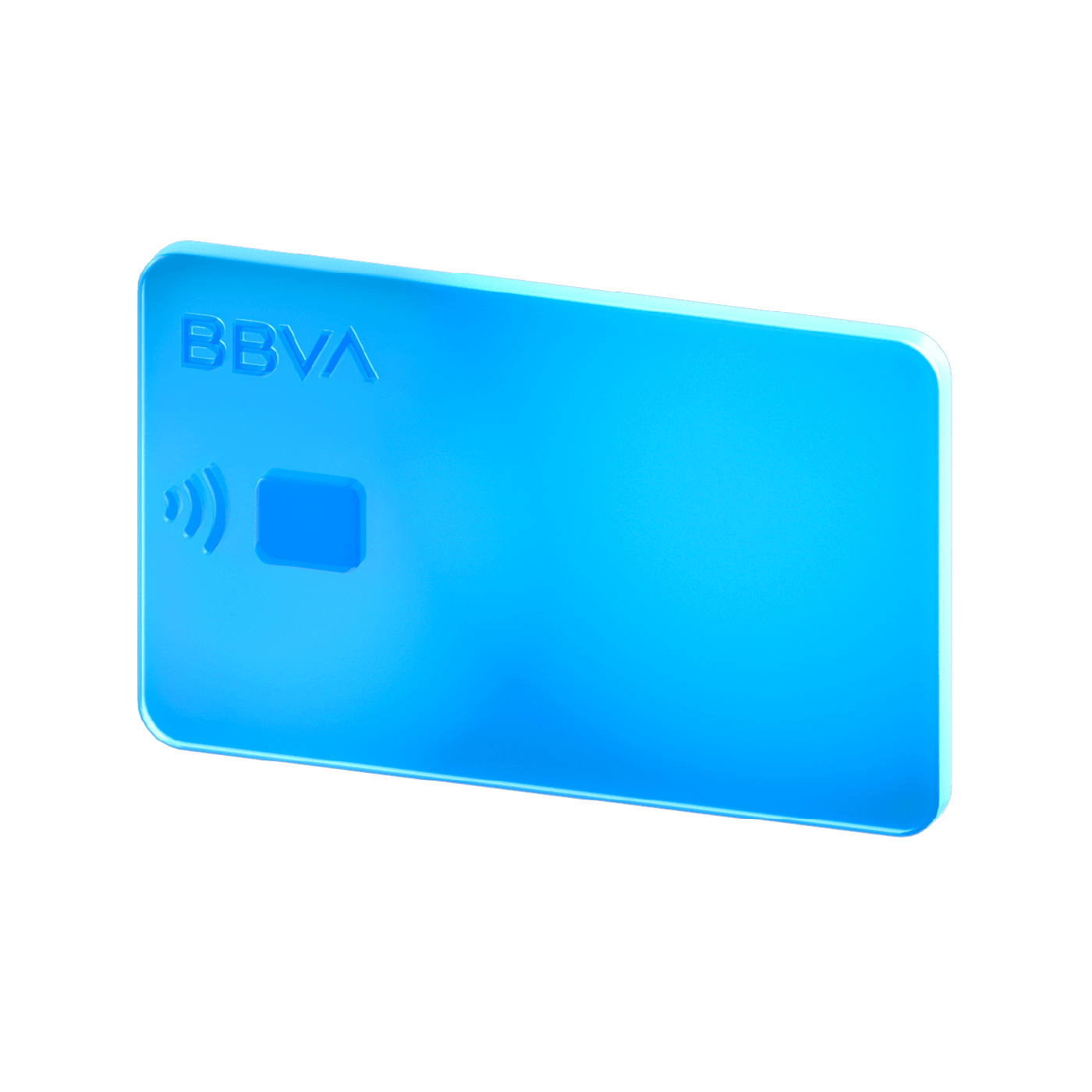When you make a purchase online or over the phone using your credit or debit card, the merchant generally asks to enter the CVV or CVC. But what exactly do these security codes mean, and why are they so important?
In this article, we explain everything you need to know about the CVV— from its meaning and purpose to practical tips on how to better protect your card. Learn how modern technologies like dynamic CVV offer enhanced protection.
Pay securely with a dynamic CVV
What does CVV mean and where can I find it?
The CVV (Card Verification Value) plays a crucial role in preventing fraud. It typically appears as a three-digit number on the back of the card, next to the signature field. For American Express cards, the CVV is located on the front and consists of four digits.
The CVV code is unique to each card and is updated whenever the card is reissued or the expiration date changes. In contrast, the card number typically remains the same unless a new contract is concluded.
BBVA debit cards do not display the CVV code on the physical card. BBVA uses a dynamic CVV that remains valid for only a few minutes, providing enhanced protection against fraud. The code is accessible via the BBVA app or online banking at the time of purchase.
CVV, CVC and other terms
The terms CVC (Card Verification Code) and CSC (Card Security Code) are often used interchangeably with CVV, although their usage may vary depending on the card issuer or context. The following provides a brief overview of the most important terms.
- CVC (Card Verification Code): This term is mainly used by Mastercard and refers to the security code that protects transactions.
- CSC (Card Security Code): It is a broader term encompassing all types of card security codes, regardless of the card issuer or type.
Despite the different names, these codes serve the same purpose: to ensure that only the person in possession of the card can authorize transactions, providing crucial protection against fraud—especially for online and over-the-phone payments.
How is the CVV used?
When you shop online, you will typically be asked to provide the following information:
- card number
- expiry date
- CVV
This information enables the merchant to verify the transaction and ensure that the card is used only with your authorization.
Why is the CVV important?
The CVV plays a crucial role in preventing fraud. When making online or phone purchases, the merchant will ask for your CVV to confirm that you actually own the card. Since the CVV is not stored on the magnetic strip or embedded in the card chip, it adds an extra layer of protection against fraudulent transactions.
It is important to keep your CVV confidential. Together with your card number and expiration date, it can be used to make unauthorized online purchases. Never share your CVV through unsecured channels such as email or over the phone. Only share it if you contact a trusted source yourself.
What is a dynamic CVV?
With advancements in technology, dynamic CVV codes have become available. Unlike a static code printed on the card, a dynamic CVV changes with each transaction. This greatly enhances security, as the code is valid only for a short period—making it far less useful if misused.
The BBVA debit card is equipped with this technology, offering enhanced security by not displaying the card number on the physical card. Both numbers can be easily accessed at any time via the BBVA app or online banking when making a purchase.
Your free current account, including a debit card
What is CVV1 and CVV2?
There are two main types of CVV codes used for credit and debit cards to help ensure secure payments.
- CVV Type 1 (CVV1): This encrypted code is stored on the card’s magnetic stripe and is used for transactions where the card is physically present. When the card is inserted into a point-of-sale (POS) terminal, the code is read and transmitted to the bank. If validated, the transaction is authorized. The purpose of the CVV1 is to verify that the card is physically present and in the possession of the merchant. However, if the card is cloned and the magnetic stripe duplicated, the CVV1 remains valid.
- CVV Type 2 (CVV2): This code is commonly used for online payments when the physical card is not present. The point of sale requests the CVV2 code to verify that the cardholder actually possesses the card. In many countries, providing the CVV2 is mandatory for online purchases, while in others it is optional. The CVV2 is printed on the back of credit or debit cards and enables electronic payments, such as those made through virtual POS systems.
Practical tips to keep your card secure
While the CVV provides an important layer of security, you can further protect your card by taking the following additional measures.
- Regularly check your bank statements: Stay vigilant for any unauthorized transactions and report them to your bank immediately.
- Use secure websites: Always verify that the websites you visit are encrypted, as shown by “https” in the URL.
- Card management: Set limits and restrictions for cash withdrawals and payments, and block your card immediately if it gets lost or stolen.





